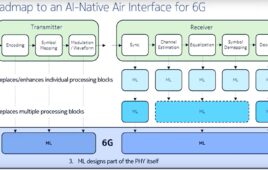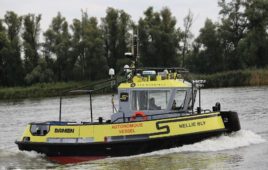Low-level limitation has been an operational shortcoming with radar. It’s something that for the most part, has been tolerable, but isn’t slowing the growth (or hurt the safety record) of the airline industry that’s relied on radar systems to assure aircraft safe passage through crowded airspace. Aviation workers are enduring a number of different alterations that will affect what flies where and how it will be viewed. From delivery drones to autonomous rescue vehicles, these crafts of the future can’t stay invisible to air traffic control systems that must track them in order to maintain proper safety measures. While conventional mechanical radar systems will remain the backbone of aviation tracking for the time being, new tools and resources will help fill the noteworthy shortcomings.
Defense contractor Raytheon has developed a low-power radar that will reportedly fill the gaps missed by conventional systems. Rather than utilize single units that are spinning and scanning on towers or mountaintops up to 200 miles out, this system proposed distributing smaller digital systems across a landscape. These units are one-square meter and resemble a big white, upright pizza box that use active electronically scanned array technology way more precise and tunable than current low-power radar systems. These unit should ably track aircraft at lower altitudes when spread across a given terrain on hilltops, or structures like buildings and cell towers.
“This ‘agile-beam’ concept allows you to redirect a pencil-like beam to follow a target, whether it’s a flying car or an airplane or a drone,” says Raytheon Engineer Michael Dubois, when talking about how the system’s scanners are capable of monitoring large areas of territory or focus on specific targets.
Conventional radar systems are only capable of tracking a few targets at a time, whereas this new system can monitor multiple. Since the beam never rotates away from the target, this can be done with higher resolution along with faster system update rates. This technology should be significantly cheaper and won’t pick up as much radio frequency interference from buildings, weather, or land masses. Units can network collaboratively and increase resolution more precisely to filter clutter. This could be essential in trying to track small drones and giving autonomous air vehicles at lower altitudes enhanced situational awareness.
“You can track aircraft, but you can also leverage it for microscale weather analysis, including 3D wind information, and down to extremely localized tracking that could help future air vehicles as well as the general public,” says Dubois. “When you get into really small areas, you can even help, for instance, hobbyists flying model rockets or airplanes or drone operators working to ensure a clear path for their own flights.”
It’s likely that low-power radar networks will be one of numerous future air mobility solutions, with another essential component being ADS-B, which is a system utilizing GPS data to automatically broadcast an aircraft’s position that’s growing increasingly popular in the industry. ADS-B has its own limitations like needing to be installed on the aircraft in question, and it can’t monitor weather or look for objects like birds, hence why radar is still necessary. The system actively tracked flights within 20 miles from a single unit, providing detailed data that guided a pilot to land at a specific location with top-notch approximation. Now in its third generation of development, low-power radar technology can be deployed by mid-2019, followed by large-scale production.



